Going Deep: Inside Fox's GRIP2 Damper
Back in 2016, I spent many months on, and then eventually reviewed, Fox's economical-ish 34 Float with their new (at the time) GRIP damper inside. It impressed me enough that I said something like ''I can't tell the difference between GRIP and FIT4,'' the latter being Fox's pro-level damper, which really says something given that GRIP was supposed to be a budget system.
Fox was apparently impressed with it, too, because they debuted their new GRIP2 damper earlier this year that's largely based on what was in that 34 Float that I swooned about over two years ago... But there are a few big differences.
Unlike the original GRIP damper, this high-end version is meant to compete with the best of the best from RockShox and the rest, and it's Fox's replacement for their long-in-the-tooth RC2 damper. GRIP2 also makes for Fox's first four-way adjustable fork by offering both low-speed compression and rebound, and high-speed compression and rebound, all tuneable via external knobs. All the knobs!
Unlike the original GRIP damper, this high-end version is meant to compete with the best of the best from RockShox and the rest, and it's Fox's replacement for their long-in-the-tooth RC2 damper. GRIP2 also makes for Fox's first four-way adjustable fork by offering both low-speed compression and rebound, and high-speed compression and rebound, all tuneable via external knobs. All the knobs!
GRIP2 Damper
• External low- and high-speed compression adjustment
• External low- and high-speed rebound adjustment
• 15 clicks of LSC, 27 clicks of HSC, 16 clicks of LSR, 8 clicks of HSR
• Variable Valve Control high-speed rebound
• Low friction seal head
• Replaces RC2 damper
• Used in high-end 36 and 40 forks
• External low- and high-speed compression adjustment
• External low- and high-speed rebound adjustment
• 15 clicks of LSC, 27 clicks of HSC, 16 clicks of LSR, 8 clicks of HSR
• Variable Valve Control high-speed rebound
• Low friction seal head
• Replaces RC2 damper
• Used in high-end 36 and 40 forks
The debut of GRIP2 slid under the radar a bit, especially with all the hoopla surrounding Fox's electronic Live Valve system, so I met up with Ariel Lindsley, Fox Suspension Engineering Technician, in Whistler to take the damper apart, learn how its Variable Valve Control (VVC for short) high-speed rebound adjustment works and, most importantly, do some laps of the Whistler Bike Park... I mean some ''testing.''
GRIP2 Damper Oil Path Video with Fox's Ariel Lindsley
Below, Lindsley runs you through the path that the oil takes inside of the GRIP2 cartridge. It gets much, much more complicated than this, but this shows you what happens after that initial compression and then the fork extending during rebound.
Below, Lindsley runs you through the path that the oil takes inside of the GRIP2 cartridge. It gets much, much more complicated than this, but this shows you what happens after that initial compression and then the fork extending during rebound.
Budget Damper to World Cup Wins
With that original GRIP system, Fox was looking for less expensive but high-performance internals than what they were using in their Performance range of forks. What they came up with proved to not just meet their expectations, but surpass them. ''The original GRIP wasn't 'How do we make in an inexpensive damper work well?' it was 'How can we make a good damper and pull cost out of it?''' Mark Jordan, Fox's Global Marketing Manager, said.
Then, when they realized the potential that the layout had, Fox's engineers were let loose to cobble together some proof of concept prototype dampers.
It wouldn't be long until long-stroke GRIP cartridges found their way into some Fox 40s on the front of World Cup downhill bikes. They had success, too, with Lindsley saying that up-sized and modified versions of what was used in that 34 Float back in 2016 have been employed to win World Cup downhill races by the likes of some people named Rachel, Aaron, and Greg.
''It pretty much was the same damper,'' Lindsley answered when I asked what different was between the one in my 34 Float GRIP back in 2016 and what Minnaar was using, but with one major difference: He was installing custom high-speed rebound valve codes (otherwise known as a shim stack) that better suited each rider's spring rate. Remember, the firmer the spring rate, the more rebound damping you'll need because the spring is pushing back that much harder. The modified World Cup GRIP2 cartridges performed so well that they ended up being the impetus for Fox's adjustable high-speed rebound valve stack, and they do it in a pretty clever way.
Of course, given that Fox has plenty of forks out there using the FIT4 system, they weren't exactly publicizing the fact that their racers were winning on what was basically a giant-sized ''budget'' damper. A bit of a conundrum on their part then, especially when GRIP2 and FIT4 are both positioned as high-end damping systems... Which one is better? ''You've got a couple of ways of looking at it,'' Jordan said of the two layouts.
''There's a little bit of a weight penalty with this [GRIP2] because it's a bigger damper with a little more oil, so if you're on a 34 Step-Cast and you want the lightest bike, you probably want the FIT4 damper. We do have people who are super weight-conscious 36 users, and FIT4 has the three-position compression. People are still into that and it's a super easy adjustment, so FIT4 is staying around for people who want that.''
So FIT4 and GRIP2 will live in parallel inside of similar platforms, but RC2 has been put out to pasture.
With that original GRIP system, Fox was looking for less expensive but high-performance internals than what they were using in their Performance range of forks. What they came up with proved to not just meet their expectations, but surpass them. ''The original GRIP wasn't 'How do we make in an inexpensive damper work well?' it was 'How can we make a good damper and pull cost out of it?''' Mark Jordan, Fox's Global Marketing Manager, said.
Then, when they realized the potential that the layout had, Fox's engineers were let loose to cobble together some proof of concept prototype dampers.
My GRIP2-equipped Fox 36 saw action on the front of Mondraker's new Foxy Carbon XR 29 over the last four months.
It wouldn't be long until long-stroke GRIP cartridges found their way into some Fox 40s on the front of World Cup downhill bikes. They had success, too, with Lindsley saying that up-sized and modified versions of what was used in that 34 Float back in 2016 have been employed to win World Cup downhill races by the likes of some people named Rachel, Aaron, and Greg.
''It pretty much was the same damper,'' Lindsley answered when I asked what different was between the one in my 34 Float GRIP back in 2016 and what Minnaar was using, but with one major difference: He was installing custom high-speed rebound valve codes (otherwise known as a shim stack) that better suited each rider's spring rate. Remember, the firmer the spring rate, the more rebound damping you'll need because the spring is pushing back that much harder. The modified World Cup GRIP2 cartridges performed so well that they ended up being the impetus for Fox's adjustable high-speed rebound valve stack, and they do it in a pretty clever way.
That's the top of Greg Minnaar's Fox 40 on the left, and the top of Richie Rude's 36 on the right, both from 2017. Notice anything different? The 'RAD' prototype compression adjuster looks a lot different than the top of a FIT4 or RC2-spec'd fork.
Of course, given that Fox has plenty of forks out there using the FIT4 system, they weren't exactly publicizing the fact that their racers were winning on what was basically a giant-sized ''budget'' damper. A bit of a conundrum on their part then, especially when GRIP2 and FIT4 are both positioned as high-end damping systems... Which one is better? ''You've got a couple of ways of looking at it,'' Jordan said of the two layouts.
''There's a little bit of a weight penalty with this [GRIP2] because it's a bigger damper with a little more oil, so if you're on a 34 Step-Cast and you want the lightest bike, you probably want the FIT4 damper. We do have people who are super weight-conscious 36 users, and FIT4 has the three-position compression. People are still into that and it's a super easy adjustment, so FIT4 is staying around for people who want that.''
So FIT4 and GRIP2 will live in parallel inside of similar platforms, but RC2 has been put out to pasture.
GRIP2 Damper Design
Suspension forks generally employ one of two systems: Open dampers are far less common than they once were, largely because of how making the oil do both lube and damping duties also lets the same oil slosh around inside the fork and mix with air. As you can imagine, that's generally frowned upon as the resulting foaming can lead to an inconsistent feel.
Closed dampers are just that, they're sealed from the outside world and are generally air-free. Problem is, you gotta allow for fluid displacement as the damper rod is compressed into the cartridge because, well, oil doesn't squish. So that's why sealed cartridges use some type of compensator. RockShox's Charger system, along with Fox's FIT4 system, both use extruded rubber bladders that expand to allow for that displacement by literally creating more room inside the cartridge as it's required. The spring-backed internal floating piston inside the GRIP2 cartridge, or any IFP-based system for that matter, does the same job, too. And when the rod extends back out, the bladder relaxes again or the IFP extends to take up that space.
All of the above is many decades old now and not news, but it surely means that the GRIP2 damper, with its spring-backed IFP, is a closed system, right? Correct, but also not all the way correct. While the damping system is sealed, there's small but very important port (a VIP, of course) at the top of the cartridge that lets it burp. I'll explain soon.
Instead of fighting to keep air and lube oil out of the cartridge by employing tighter and tighter tolerances, especially at the main seal head, Fox says that they've ''reduced the squeeze on the shaft seal, but still control it with very tight tolerances.'' This can let in around 5cc of oil after 125 hours of use, which may not sound like much but it all has to be accounted for, and while oil getting into a cartridge generally be a bad thing, it's not when your whole system is designed with that in mind. ''Only oil is ingested. Air is not ingested,'' they also said.
As is often the case, this is an approach that's been used before in the moto world, as is the other part of the equation. The looser fit at the main seal head has a big plus: Way less inherent friction from the main sticking point, but letting it ingest oil whenever it wants would quickly result in the cartridge hydraulically locking unless Fox took that into account. Remember, oil doesn't compress, so when it's full of oil, that's it. Good thing Fox took that into account.
A small, teardrop-shaped bleed passage on the spring-side of the IFP allows excess oil to actually back-fill a bit behind the IFP as it passes over what is essentially just a small dimple in the shaft. That oil is then expelled through a port at the top of the cartridge to flow back down the inside of the fork leg for lubrication duties. ''It's kinda like its self-healing all the time,'' was how Lindsley described it. ''This isn't' anything revolutionary; it's been around forever,'' he also stressed. ''If we took a moto fork apart off an old CRF it'd have something similar to this. It'd be a lot more robust because it's for moto, of course.''
Fox also says it makes for easier bleeding because you can pretty much just over-fill the damper and the excess magically exits out of that nifty hole to make you look like you knew what you were doing.
Suspension forks generally employ one of two systems: Open dampers are far less common than they once were, largely because of how making the oil do both lube and damping duties also lets the same oil slosh around inside the fork and mix with air. As you can imagine, that's generally frowned upon as the resulting foaming can lead to an inconsistent feel.
Looks simple, right? Look again. The GRIP2 cartridge is considered a closed system, despite the purge hole at the top of the unit.
Closed dampers are just that, they're sealed from the outside world and are generally air-free. Problem is, you gotta allow for fluid displacement as the damper rod is compressed into the cartridge because, well, oil doesn't squish. So that's why sealed cartridges use some type of compensator. RockShox's Charger system, along with Fox's FIT4 system, both use extruded rubber bladders that expand to allow for that displacement by literally creating more room inside the cartridge as it's required. The spring-backed internal floating piston inside the GRIP2 cartridge, or any IFP-based system for that matter, does the same job, too. And when the rod extends back out, the bladder relaxes again or the IFP extends to take up that space.
All of the above is many decades old now and not news, but it surely means that the GRIP2 damper, with its spring-backed IFP, is a closed system, right? Correct, but also not all the way correct. While the damping system is sealed, there's small but very important port (a VIP, of course) at the top of the cartridge that lets it burp. I'll explain soon.
Instead of fighting to keep air and lube oil out of the cartridge by employing tighter and tighter tolerances, especially at the main seal head, Fox says that they've ''reduced the squeeze on the shaft seal, but still control it with very tight tolerances.'' This can let in around 5cc of oil after 125 hours of use, which may not sound like much but it all has to be accounted for, and while oil getting into a cartridge generally be a bad thing, it's not when your whole system is designed with that in mind. ''Only oil is ingested. Air is not ingested,'' they also said.
As is often the case, this is an approach that's been used before in the moto world, as is the other part of the equation. The looser fit at the main seal head has a big plus: Way less inherent friction from the main sticking point, but letting it ingest oil whenever it wants would quickly result in the cartridge hydraulically locking unless Fox took that into account. Remember, oil doesn't compress, so when it's full of oil, that's it. Good thing Fox took that into account.
You're looking at the spring-backed internal floating piston. See that teardrop-shaped divot (right) on the silver compression rod? When the compression piston passes over that, excess fluid is burped out to the opposite side of it, and eventually out of the cartridge through a purge hole.
A small, teardrop-shaped bleed passage on the spring-side of the IFP allows excess oil to actually back-fill a bit behind the IFP as it passes over what is essentially just a small dimple in the shaft. That oil is then expelled through a port at the top of the cartridge to flow back down the inside of the fork leg for lubrication duties. ''It's kinda like its self-healing all the time,'' was how Lindsley described it. ''This isn't' anything revolutionary; it's been around forever,'' he also stressed. ''If we took a moto fork apart off an old CRF it'd have something similar to this. It'd be a lot more robust because it's for moto, of course.''
Fox also says it makes for easier bleeding because you can pretty much just over-fill the damper and the excess magically exits out of that nifty hole to make you look like you knew what you were doing.
How Fox Did High-Speed Rebound Adjustment
A fork's high-speed rebound setting has a big say in how your bike reacts when your hitting things hard and fast, but it also plays a part in where the fork will sit in its travel while you're rolling (spring rate determines static ride height). My testing of the GRIP2 damper at the two extremes showed nearly a full inch difference in ride height, which I wouldn't have believed if I didn't see it with my own eyes. More on that later, though.
Traditionally, high-speed rebound adjustment was done via preloading that valve, but that can cause the orifice to choke up, Lindsley explained, and then more force is required to open those preloaded shims. ''You get this in-between shitty point and then finally the valves crack open. It does work, but it's not ideal,'' he went on to describe. For the record, this layout is what's used in many dampers.
It's all about that real estate. ''You're really constrained with the size because there's not a lot of room in there to do stuff, as far as diameter goes. And we wanted to keep the relationship between the center bolt [commonly known as the piston bolt] that holds everything together and the outside [diameter] of the valves. We want as much distance as we can there because that allows the valves to flex more.'' I'm a visual learner, so I pictured a frisbee (the valves) sitting dead center and face up on top of a skinny pole (the small center bolt) - you'd be able to easily flex the frisbee over the pole if you pushed down on it. Now picture the same frisbee on top of a larger diameter pole that covers nearly all of its footprint - it'd be much more difficult to flex.
They needed a way to provide external high-speed rebound adjustment but had next to no room, didn't want to use an existing and, in their opinion, compromised system, and also wanted to let the valves flex as much as they needed to.
''This is something that Damon and Bill Brown, the Head of Engineering, came up with,'' Lindsley said while holding up Fox's Variable Valve Control (VVC) adjustable high-speed rebound system, otherwise known as The Answer. At first glance, the rebound piston looks a lot like, well, a rebound piston, but then you notice that funny looking center bolt that I just mentioned. And then the dark-colored plate that's between that and the high-speed rebound shims. And then there's the even stranger leaf spring thingy. What's going on in there?
Here's how VVC works: The dark brown disc the looks like a piston with a bunch of tiny holes in it isn't a piston at all, but rather the face for that double-ended leaf spring. On that face is a raised spiral that's been machined into the top of it, with each end of the tiny leaf spring resting on it.
''It's not preloading the leaf spring, it's just changing the fulcrum point,'' Jordan underlined for me. ''So, instead of pushing on the leaf spring from the outside where it has the most leverage and is really easy to flex, it moves the fulcrum point closer to the middle, effectively making it stiffer.'' The key thing to remember is that a shorter lever, aka the leaf spring, means more damping and vice versa. Lindsley said that the dark colored disc that rides on the leaf spring will move evenly, and there's still a valve stack in there, albeit a fair bit lighter than it would be otherwise.
Fox isn't the first to do adjustable high-speed rebound on a fork - Marzocchi had it years ago - but they were going for a more usable, more tuneable system that provides a nice, linear line on the dyno without any funny spikes. Marzocchi's wasn't as effective, they say, largely due to due there being barely any room from the outside diameter of the bolt to the outside diameter of the valve, so they couldn't get the flex that Fox wanted.
Eeesh, that's a buttload of tech to swallow, and we can talk about valves, piston bolts, and doodads all day long, but it doesn't matter if it makes no difference on the trail. So let's find out if this extra knob on Fox's new GRIP2 damper makes a difference in the real world.
A fork's high-speed rebound setting has a big say in how your bike reacts when your hitting things hard and fast, but it also plays a part in where the fork will sit in its travel while you're rolling (spring rate determines static ride height). My testing of the GRIP2 damper at the two extremes showed nearly a full inch difference in ride height, which I wouldn't have believed if I didn't see it with my own eyes. More on that later, though.
The anodized orange part is your rebound piston, but it gets weird from there. See that dark gray disk? The high-speed rebound shims rest between it and the piston, and the VVC system adjusts how they react.
It turns out that Lindsley was already adjusting high-speed rebound internally for of many of Fox's athletes: ''When you valve a fork for everybody, most forks are kinda over-valved for a lot of people, so you have this big range with the orifice adjuster. But if someone wants to improve their performance, the first thing I do is go in there and pull a valve or two off if they're lighter, and maybe add one if they're heavier, but that's pretty rare.
''Then it became really important and I was doing that for all those riders, and it worked really well for them, but wouldn't it be nice to be able to do that without having to take the fork or damper apart? So we wanted to do high- and low-speed rebound, but that adds complication. But the reality now is that, with a few clicks, I can basically get the rebound as close as perfect as you can without having to take the fork apart.''
It wasn't that simple, of course, and the 'but' in this one comes down to real estate. As you might expect, simply adding in another external adjustment isn't an easy task, especially when you need to cram it in there without adding more length or width to the whole thing. Don't forget that every single gram counts as well.
''Then it became really important and I was doing that for all those riders, and it worked really well for them, but wouldn't it be nice to be able to do that without having to take the fork or damper apart? So we wanted to do high- and low-speed rebound, but that adds complication. But the reality now is that, with a few clicks, I can basically get the rebound as close as perfect as you can without having to take the fork apart.''
It wasn't that simple, of course, and the 'but' in this one comes down to real estate. As you might expect, simply adding in another external adjustment isn't an easy task, especially when you need to cram it in there without adding more length or width to the whole thing. Don't forget that every single gram counts as well.
High-Speed Rebound VS Low-Speed Rebound
The obvious question is, of course, why the hell would a rider want yet another dial to turn? And what does high-speed rebound even do?
First, always remember that when we're talking about speed, we're talking about damper shaft speed, not your literal speed. That part is important. You could be riding slowly and get a high-speed compression from a big drop with a flat landing that would compress your suspension quickly, and Fox wanted a dial to control the resulting rebound speed from those type of hits, AKA high-speed rebound. But if that drop had a steep landing that eases your transition from being in the air to being on the ground, your suspension is going to compress relatively slowly, making for a low-speed compression and low-speed rebound control. There's a dial for that, too, but that's old news.
The obvious question is, of course, why the hell would a rider want yet another dial to turn? And what does high-speed rebound even do?
First, always remember that when we're talking about speed, we're talking about damper shaft speed, not your literal speed. That part is important. You could be riding slowly and get a high-speed compression from a big drop with a flat landing that would compress your suspension quickly, and Fox wanted a dial to control the resulting rebound speed from those type of hits, AKA high-speed rebound. But if that drop had a steep landing that eases your transition from being in the air to being on the ground, your suspension is going to compress relatively slowly, making for a low-speed compression and low-speed rebound control. There's a dial for that, too, but that's old news.
The silver part with the pinch clamp is actually the center bolt, and it's attached like that so it can be as small as possible. That silver tong sticking straight up (there's one opposite it, too) is the leaf spring. When you turn the adjuster, the wings on the leaf spring rotate around the spiral that's on the face of the dark-colored disc to change the leverage applied to it.
Traditionally, high-speed rebound adjustment was done via preloading that valve, but that can cause the orifice to choke up, Lindsley explained, and then more force is required to open those preloaded shims. ''You get this in-between shitty point and then finally the valves crack open. It does work, but it's not ideal,'' he went on to describe. For the record, this layout is what's used in many dampers.
It's all about that real estate. ''You're really constrained with the size because there's not a lot of room in there to do stuff, as far as diameter goes. And we wanted to keep the relationship between the center bolt [commonly known as the piston bolt] that holds everything together and the outside [diameter] of the valves. We want as much distance as we can there because that allows the valves to flex more.'' I'm a visual learner, so I pictured a frisbee (the valves) sitting dead center and face up on top of a skinny pole (the small center bolt) - you'd be able to easily flex the frisbee over the pole if you pushed down on it. Now picture the same frisbee on top of a larger diameter pole that covers nearly all of its footprint - it'd be much more difficult to flex.
The patent-pending VVC system sits at the bottom of the GRIP2 cartridge, and while it's actually pretty simple, the small packaging is a clever solution.
They needed a way to provide external high-speed rebound adjustment but had next to no room, didn't want to use an existing and, in their opinion, compromised system, and also wanted to let the valves flex as much as they needed to.
''This is something that Damon and Bill Brown, the Head of Engineering, came up with,'' Lindsley said while holding up Fox's Variable Valve Control (VVC) adjustable high-speed rebound system, otherwise known as The Answer. At first glance, the rebound piston looks a lot like, well, a rebound piston, but then you notice that funny looking center bolt that I just mentioned. And then the dark-colored plate that's between that and the high-speed rebound shims. And then there's the even stranger leaf spring thingy. What's going on in there?
Here's how VVC works: The dark brown disc the looks like a piston with a bunch of tiny holes in it isn't a piston at all, but rather the face for that double-ended leaf spring. On that face is a raised spiral that's been machined into the top of it, with each end of the tiny leaf spring resting on it.
When you turn the adjuster, the wings on the leaf spring rotate around that spiral to change the leverage applied to it. When you're in the softest high-speed rebound setting (least amount of rebound), the ends of the leaf spring are contacting the outside of the disc where the spiral is farther away and pushes on the outer end of the springs to provide more leverage on the disc. More leverage makes it easier to move the disc. Turning the knob clockwise to add high-speed rebound damping rotates the spring so that the ends contact the spiral closer to the center, meaning they're both shorter leverage arms and more force is required to get the valves to open, and therefore you have more damping. Pretty clever and very compact.
''It's not preloading the leaf spring, it's just changing the fulcrum point,'' Jordan underlined for me. ''So, instead of pushing on the leaf spring from the outside where it has the most leverage and is really easy to flex, it moves the fulcrum point closer to the middle, effectively making it stiffer.'' The key thing to remember is that a shorter lever, aka the leaf spring, means more damping and vice versa. Lindsley said that the dark colored disc that rides on the leaf spring will move evenly, and there's still a valve stack in there, albeit a fair bit lighter than it would be otherwise.
You've got four knobs to play with on your GRIP2 fork, and Fox includes recommended starting points not just for air pressure, but for damper setting relative to your spring rate.
Fox isn't the first to do adjustable high-speed rebound on a fork - Marzocchi had it years ago - but they were going for a more usable, more tuneable system that provides a nice, linear line on the dyno without any funny spikes. Marzocchi's wasn't as effective, they say, largely due to due there being barely any room from the outside diameter of the bolt to the outside diameter of the valve, so they couldn't get the flex that Fox wanted.
Eeesh, that's a buttload of tech to swallow, and we can talk about valves, piston bolts, and doodads all day long, but it doesn't matter if it makes no difference on the trail. So let's find out if this extra knob on Fox's new GRIP2 damper makes a difference in the real world.
Does it Matter on the Trail?
I've had Mondraker's new Foxy Carbon XR 29 in my stable for the last four months (I also reviewed it, too), and it conveniently came with Fox's 160mm-travel Factory 36 Float EVOL GRIP2 29 bolted to the front of it. Let's not be so formal and just call it the 36 GRIP2 for short, though. The big blue bike has had a metric shit ton of miles put on it over that time, all of them without a hint of complaint from the fork so I'm satisfied on the reliability front.
There was a new harshness through the grips as well, which certainly wasn't a surprise, and the bike felt a touch pointier and more nervous than it had before I closed the high-speed rebound circuit. This would make sense if the fork weren't getting a chance to extend, effectively making the Foxy's head angle a bit steeper. Actually, the sag-o-meter (otherwise known as the O-ring) showed that I was sitting close to a full inch deeper in the fork's stroke through most sections, which is nearly a full degree of change up front.
I certainly didn't want to spend too much time with my fork set up like that because, well, I don't like eating shit, so the next step was to go in the opposite direction: Fully open high-speed rebound. This means that the HSR knob was set to eight clicks out from closed. Two examples of the same damper can sometimes have a different number of clicks due to manufacturing variances, which is why the number of clicks is always referenced from fully closed.
So with the HSR dialed completely off, the bike was an entirely different animal that reacted in a completely different way from when the HSR was fully on. Instead of a strange harshness and odd handling, the front-end wanted to skitter across fast, rough ground, and one tricky part saw the front tire slide across a section of rocks like it was wetter than the front row at a Shamu (RIP) SeaWorld show. But it was dry, and what I was feeling was the front tire losing contact with the ground as the nearly undamped fork wasn't able to keep up.
Back to my preferred setting, which is 6 clicks out from fully closed, and the bike was yet again a different animal, only this time it was predictable and felt like home. It also re-confirmed my thoughts that Fox's new 36 and GRIP2 damper is probably the most potent off-the-shelf fork that you can get right now if you're into the enduro and all-mountain thing. It's also the only one that lets you externally adjust your high-speed rebound to best suit your spring rate, which is more of a tuning advantage than I thought it would be.
This means that a 120lb pint-sized sport-level rider can get the same rebound control that a 210lb pro racer wants, but neither will have to open up their forks to do it because of that new dial at the bottom of the fork leg. There's a sticker on the fork with recommended damper settings to match each air spring pressure suggestion, so it should be a no-brainer as long as you can read and spend the five minutes required to have it work well. Spend the five minutes.
I've had Mondraker's new Foxy Carbon XR 29 in my stable for the last four months (I also reviewed it, too), and it conveniently came with Fox's 160mm-travel Factory 36 Float EVOL GRIP2 29 bolted to the front of it. Let's not be so formal and just call it the 36 GRIP2 for short, though. The big blue bike has had a metric shit ton of miles put on it over that time, all of them without a hint of complaint from the fork so I'm satisfied on the reliability front.
The performance is top-notch, too, as it should be for a fork that hovers around the $1,000 USD mark. How does it compare to its closest competitor, RockShox's Lyrik? Neither are going to hold you back, of course, and you can read all about how the two fared in Mike Kazimer's comparo review. Spoiler alert: He preferred the 36.
A Fox 36 working well is about as newsworthy as anything from the most recent Interbike, so not at all, in other words. We know the 36 is badass. What I wanted to find out, however, was what sort of difference having an external high-speed rebound adjustment makes, and also if it's even worthwhile. To do this, I started at the two extremes of the damping range and did the same run over and over again; fully in (0 clicks out) and fully out (8 clicks out) so that the two extremes underline the difference in action. This was done on the same lap, and with the same spring rate in the fork.
And what a difference it was.
With the high-speed rebound completely closed for maximum damping, I noticed two things right away. First, my handlebar felt lower, like I had ditched a few headset spacers from under the stem. I hadn't, but that's the impression I got. Lindsley explained how what I was feeling was the 36 sitting lower in its travel because it was returning to its sag point slower, or sometimes not at all if it didn't have the time to do it before the next root or rock got in the way. Makes sense.
A Fox 36 working well is about as newsworthy as anything from the most recent Interbike, so not at all, in other words. We know the 36 is badass. What I wanted to find out, however, was what sort of difference having an external high-speed rebound adjustment makes, and also if it's even worthwhile. To do this, I started at the two extremes of the damping range and did the same run over and over again; fully in (0 clicks out) and fully out (8 clicks out) so that the two extremes underline the difference in action. This was done on the same lap, and with the same spring rate in the fork.
And what a difference it was.
With the high-speed rebound completely closed for maximum damping, I noticed two things right away. First, my handlebar felt lower, like I had ditched a few headset spacers from under the stem. I hadn't, but that's the impression I got. Lindsley explained how what I was feeling was the 36 sitting lower in its travel because it was returning to its sag point slower, or sometimes not at all if it didn't have the time to do it before the next root or rock got in the way. Makes sense.
There was a new harshness through the grips as well, which certainly wasn't a surprise, and the bike felt a touch pointier and more nervous than it had before I closed the high-speed rebound circuit. This would make sense if the fork weren't getting a chance to extend, effectively making the Foxy's head angle a bit steeper. Actually, the sag-o-meter (otherwise known as the O-ring) showed that I was sitting close to a full inch deeper in the fork's stroke through most sections, which is nearly a full degree of change up front.
I certainly didn't want to spend too much time with my fork set up like that because, well, I don't like eating shit, so the next step was to go in the opposite direction: Fully open high-speed rebound. This means that the HSR knob was set to eight clicks out from closed. Two examples of the same damper can sometimes have a different number of clicks due to manufacturing variances, which is why the number of clicks is always referenced from fully closed.
If you're the kind of rider who enjoys getting the most out of your equipment, or at least learning how it works, the four-way adjustable GRIP2 damper is going to make sense.
So with the HSR dialed completely off, the bike was an entirely different animal that reacted in a completely different way from when the HSR was fully on. Instead of a strange harshness and odd handling, the front-end wanted to skitter across fast, rough ground, and one tricky part saw the front tire slide across a section of rocks like it was wetter than the front row at a Shamu (RIP) SeaWorld show. But it was dry, and what I was feeling was the front tire losing contact with the ground as the nearly undamped fork wasn't able to keep up.
Back to my preferred setting, which is 6 clicks out from fully closed, and the bike was yet again a different animal, only this time it was predictable and felt like home. It also re-confirmed my thoughts that Fox's new 36 and GRIP2 damper is probably the most potent off-the-shelf fork that you can get right now if you're into the enduro and all-mountain thing. It's also the only one that lets you externally adjust your high-speed rebound to best suit your spring rate, which is more of a tuning advantage than I thought it would be.
This means that a 120lb pint-sized sport-level rider can get the same rebound control that a 210lb pro racer wants, but neither will have to open up their forks to do it because of that new dial at the bottom of the fork leg. There's a sticker on the fork with recommended damper settings to match each air spring pressure suggestion, so it should be a no-brainer as long as you can read and spend the five minutes required to have it work well. Spend the five minutes.
Author Info:
Must Read This Week
[UPDATED] Final Elite XC Results & Overall Standings from the Mairiporã XC World Cup 2024
42137 views
42137 views
Sign Up for the Pinkbike Newsletter - All the Biggest, Most Interesting Stories in your Inbox
PB Newsletter Signup
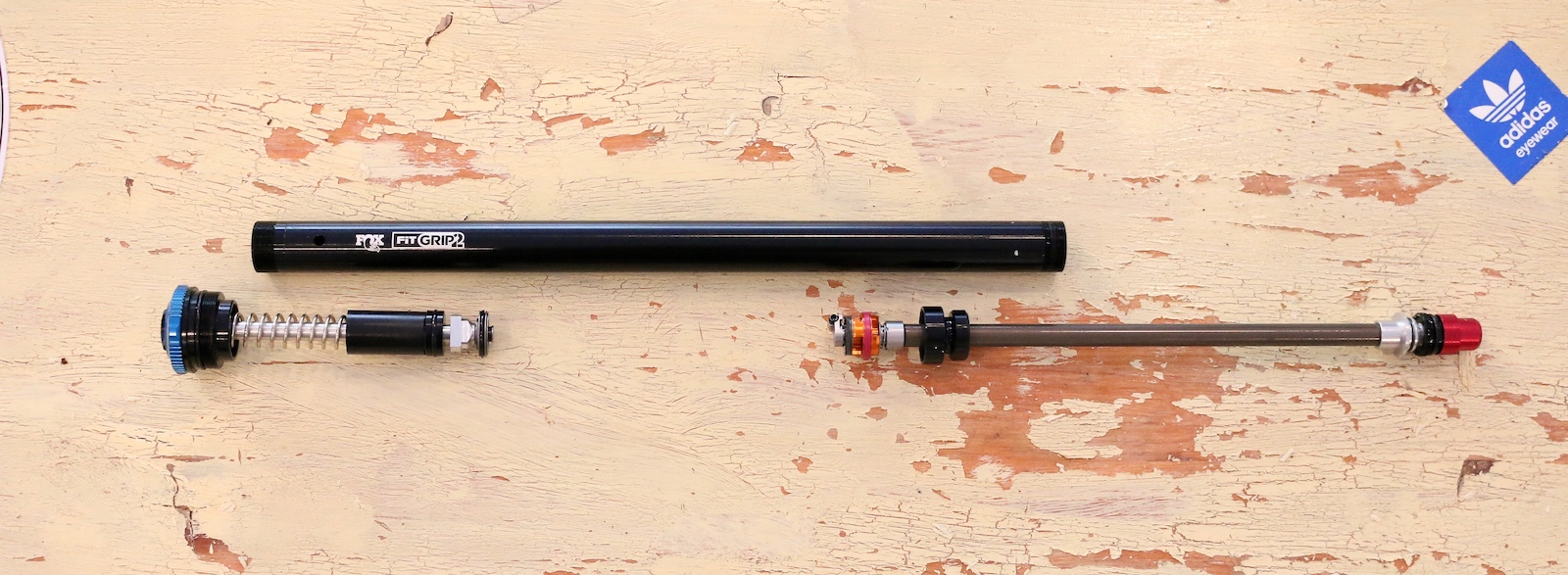
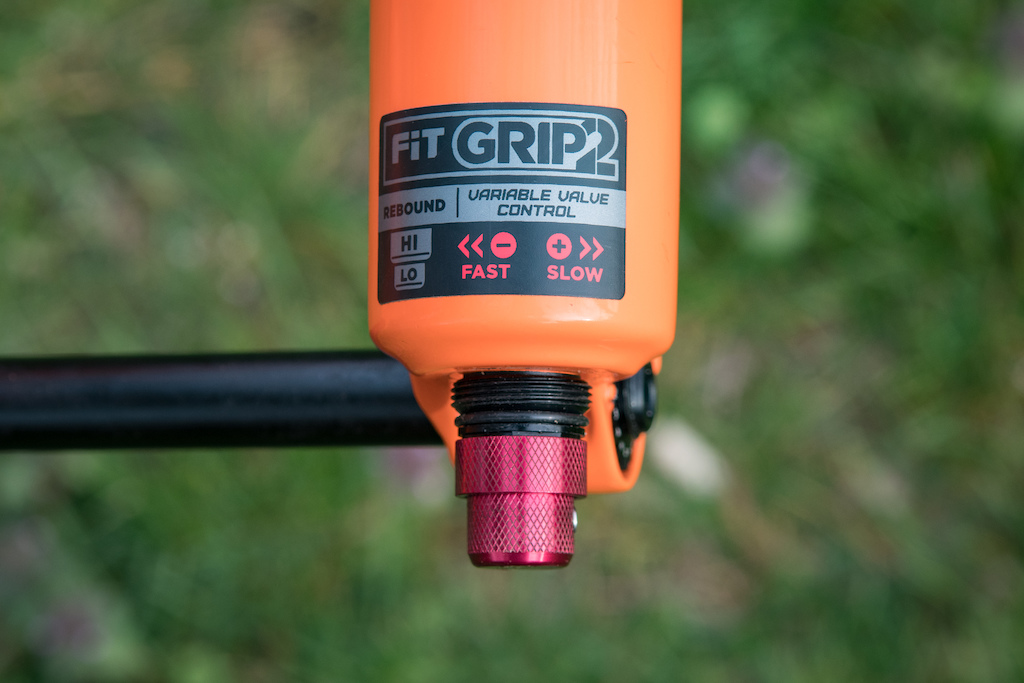

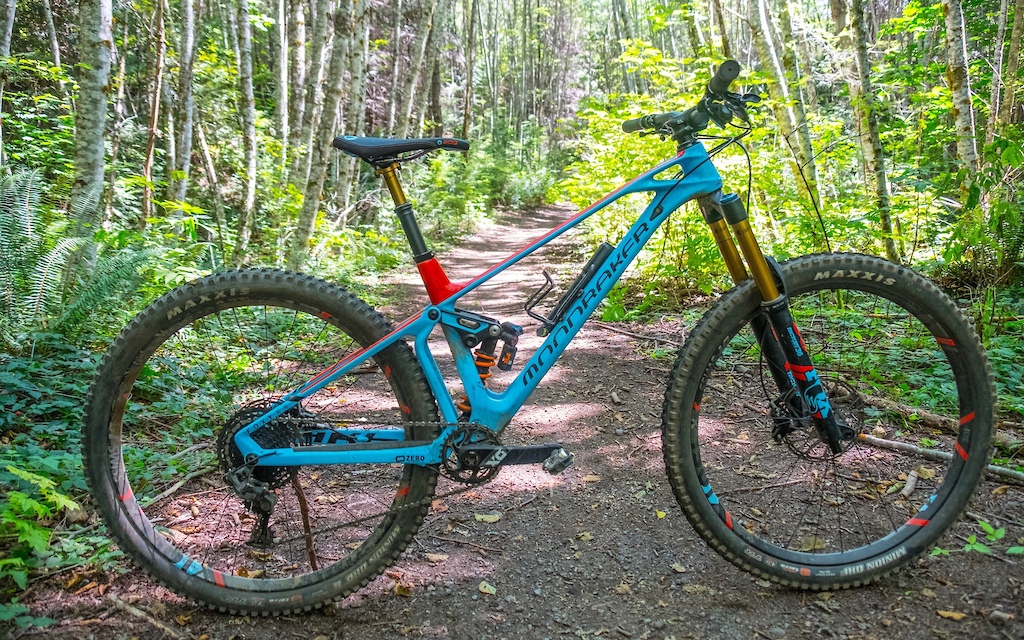
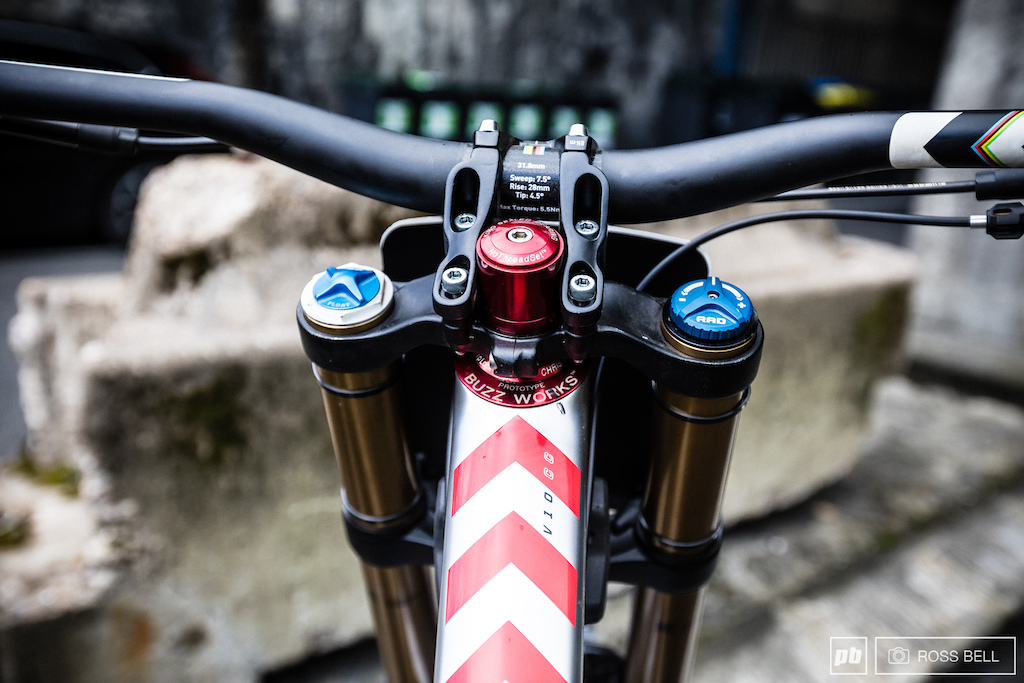


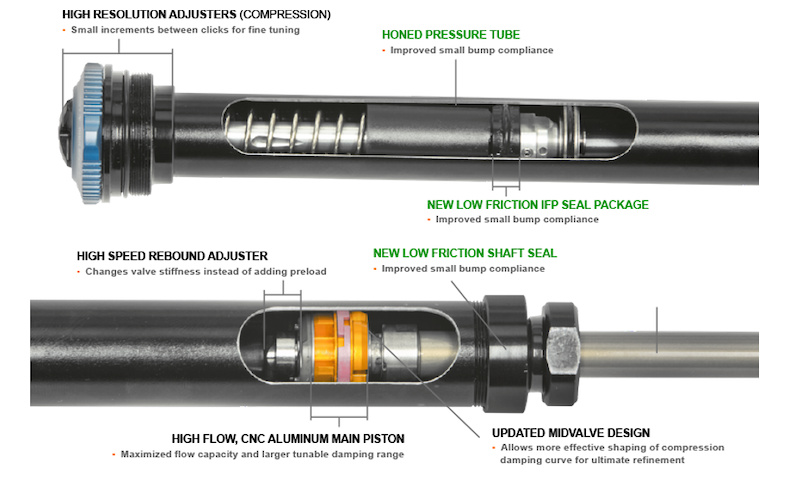
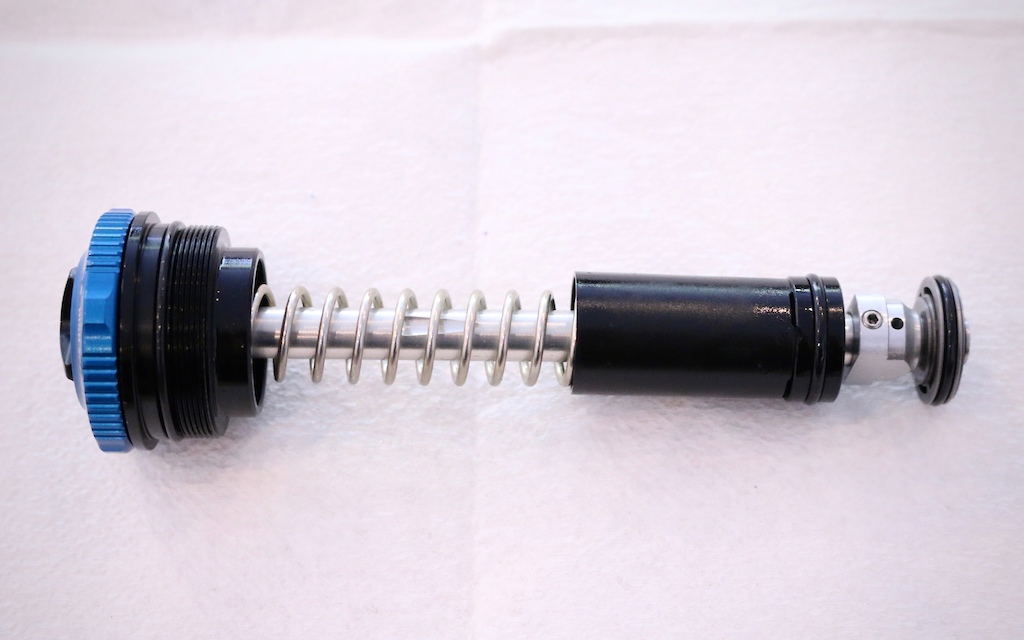
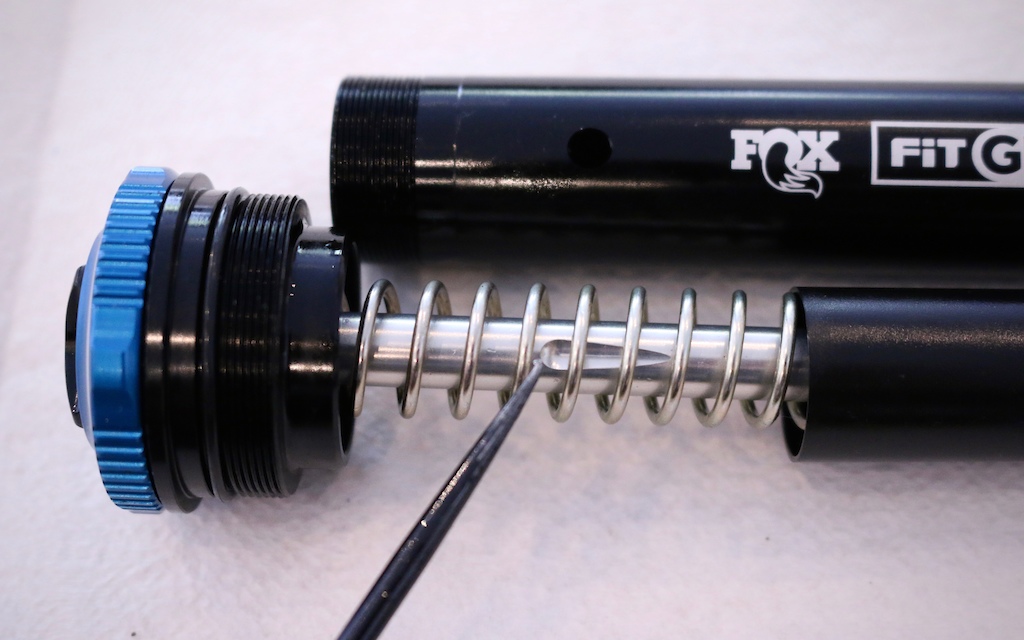
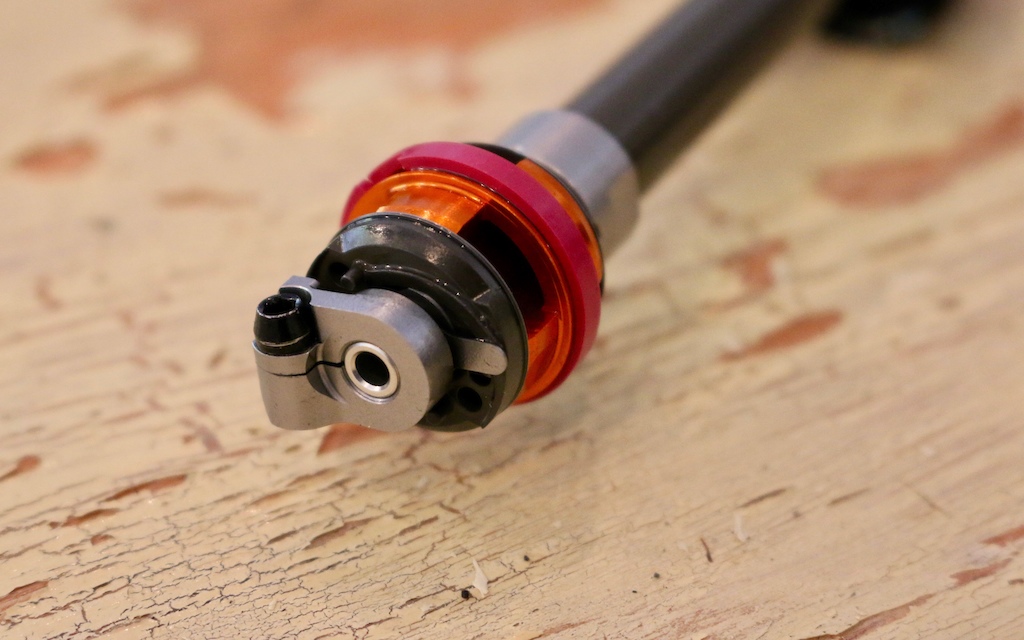



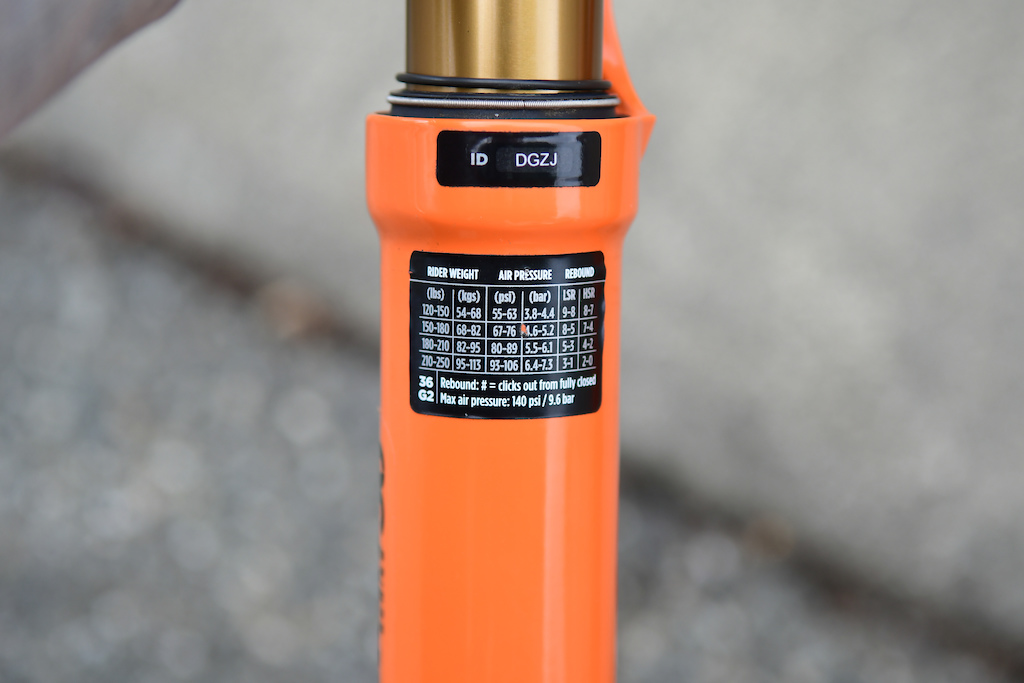

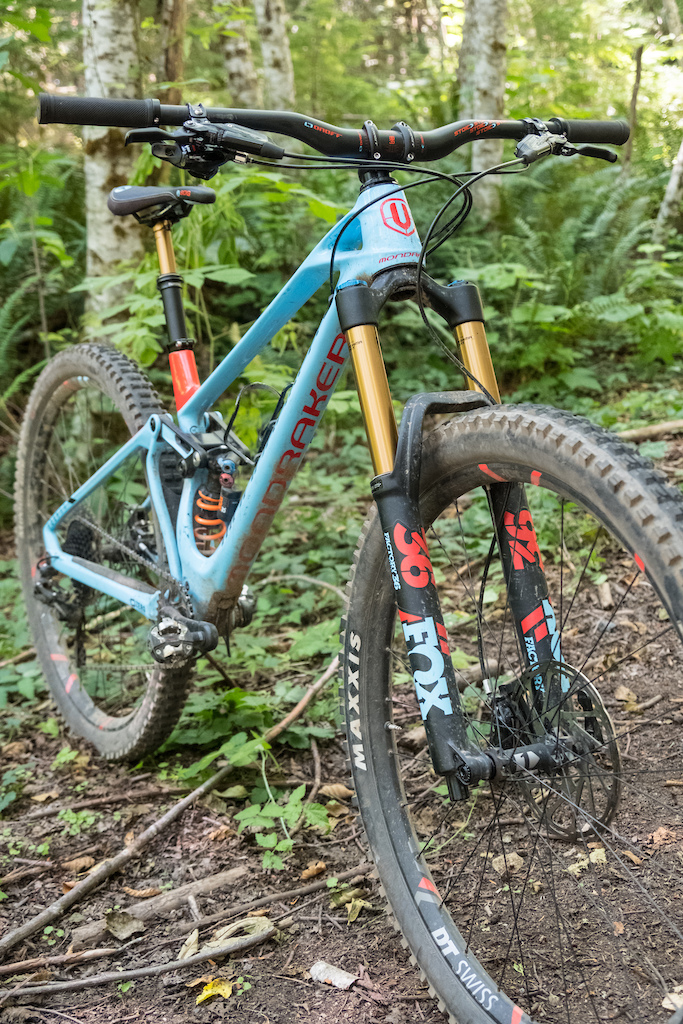
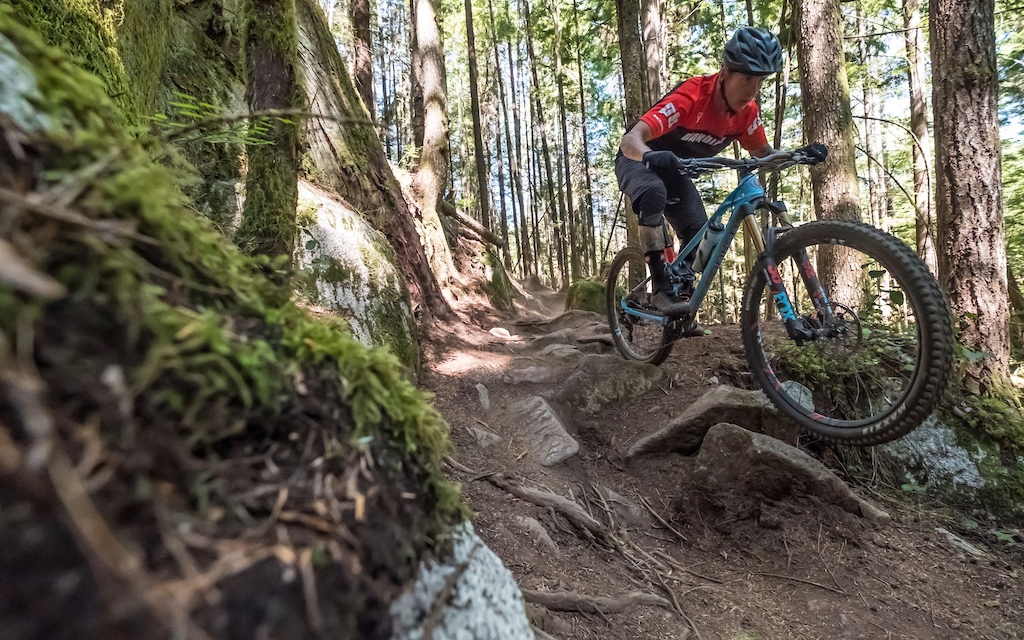

Ended up fixing the issue by putting 35ml oil in the air spring to make it ramp up and running LSC almost all the way on (no difference between clicks up until the last 2 clicks anyway).
Just recently serviced the fork, bled the damper and put Enduro seals on. Had to run more psi as was getting 5% more sag with the reduced friction of the better seals, 2 clicks less rebound damping with the correct weight oil in them and finally a useable LSC dial, forks must have had something like 5wt or lower damping oil from factory the whole time along with the shitty seals.
Have ridden these new Fox 36 forks and they are in a league of their own performance-wise, such a nice feel to them.
Came here just for that comment and what do you know, its at the top of the list
At the current moment it's feeling as good as any air fork I've used. We'll see how long that lasts...
It's understandable that Fox and Rockshox get the most attention, being the largest most popular companies. However, not covering X-Fusion, Manitou, DVO, BOS, etc. enforces the status quo and prevents the big two from feeling pressure to truly innovate and lower prices.
We've also reviewed the DVO Emerald and Diamond, along with the X-Fusion Trace and Sweep. We're not trying to ignore anybody - if there's new, relevant technology out there we try to cover it.
Fox and RockShox happen to be the largest two players in the suspension market at the moment, which means that there are many, many riders out there on their products - it makes sense to open one up and provide a little more insight as to what's going on inside.
Even though the quality of your reviews is going up, we are seeing more comments suggesting the review is nothing more than a commercial plug for your ‘biggest’ sponsor/fincial contributors.
An element of this is sociatal...people are getting pissed with there fun space being monetised (maybe they should pay?). But can we believe that reviews and product discussions are impartial?
I’m wittering...but hopefully you get my point?
Here, Levy reports the high speed rebound to have a huge effect on ride height and quality.
Is that down to the difference between fork and rear damper (both reacting differently to HSR, no linkage involved at the front end) or did I miss something else?
Care to comment @VorsprungSuspension ?
The setup method mentioned in that Tuesday Tune video was for the sake of simplification and getting a decent usable setup from the X2. It isn't the only viable method of finding a good setup, nor will everyone out there necessarily prefer the result it'll give you - it just helps minimise confusion caused by the amount of crosstalk between the HSR and LSR adjusters on that particular shock, without doing anything dumb, dangerous or unpredictable.
Would the compression circuit benefit from something similar?
Keep up the good work, hope there will be more Tuesday Tune eps sometime!
Honestly, all this advancement in Grip2 means nothing to me when I have my ride ruined by a snap-crackle-pop I can feel in my grips.
I would pay $500 more for a fork that weighed 1lb more if I could get a guarantee it wouldn't creak.
So @foxfactory whats the plan?
I know its crazy to assume someone would ride a high end suspension fork for more than two years though.
After 4 CSU's you just gotta sell the fork and start over.
@yetikid Yup totally. Gotta have it serviced to get the CSU replaced. No guarantee it wont start creaking again in 8 weeks depending how and what you ride.
I had one creaky fork (not Fox) and it worked like a charm.
Not sure why @foxfactory isn’t working harder on this it must cost them a fortune.
I have a buddy who’s been through 3 I’m less than a year. Sometimes only lasting weeks. So Godamn ridiculous.
I’m ready to ditch Fox in favour of RockShox despite their superior performance. The customer service BS just isn’t worth it!
From my experience the creaking / crackling sensation is most felt while in big compression's, or when hard on the front brake. Its an awful, ride ruining feeling tht can be heard / felt in the grips. Mine currently feels like something is cracking or about to snap off.
Nothing worse than your 1600$ suspension fork feeling like a loose shopping cart.
High-speed-rebound is extremely important especially regarding the fork, compared to the rear shock. When the HSR is too slow to return as Levy discussed, you end up "packing up" through chundery repetitive hits. In other words, the first root you may hit feels fine, but as the tire moves closer up to the next obstacle, if the front tire did not shoot back down to the ground fast enough, your fork is already sitting deeper in the stiffer zone of the travel, and ALL the next quick hits after the first are going to feel STIFF. Same cycle over and over...
The adjustable part of this is important as Levy notes, as a pro 200+lb rider may have 120psi in the fork, and a pro 130lb rider may have 70psi in the fork. Both riders need the fork to shoot back to the ground at the same speed. If the HSR is not adjustable and both riders are on the same fork tune, the 200+ lb pro may have a perfect/fast rebound speed, and the 130lb pro might be stuck with a fork that won't rebound/extend fast enough.
The new Marzocchi Z1 is a close match but uses the heavier 6000 series chassis. As much as it is nice to have the additional adjustments the ability to use the compression sweep of the 3 way 36 Performance Grip fork is perfect before a big climb or to open it wide open on a long descent. So far the simplicity of the base Grip fork has far outweighed the fork tuning I used to look for. Moral of the story is buy the Bomber Z1 fork and just ride unless you are a knob grabber it's the best value/performance fork out there right now in the AM/Enduro space.
The obvious competitor to the 36 Grip2 isn't the PIke.... Why not a comparison to the new RC2 Lyrik???
regards,
Pinkbike Forum
You didn't have the metric system fed to you in school like the Canadian kids did.
He didn't actually say meters though.
Just Saying.
Bottom line, if I had a creaking CSU on a test fork (or a test bike), you'd hear about it. But I haven't had this come up on any test (or personal) bikes.
Mike
The big issue is that Fox doesn’t care, or is in denial, because they NEVER have enough spare CSUs (here in BC at least) to be able to cope with the demand for replacements.
I’ve got one bike, so lost riding time for four months last year waiting for a CSU for my 2017 36, bought a 2018 because I was tired of waiting, and have now waited four months again, because the 2018 started creaking after five months. Throughout, Fox and their distributors have been nothing but empty promises. I could give you a list of people who would report the same BS service!
It definitely highlights how the LSC/HSC (or LSR/HSR) function as a team. If your LSC is a bit more closed...it'll overflow earlier on high velocity cycles/hit thus engaging the HSC more often and earlier in the travel. I used to think of them as more separate but thats not the case.
Makes you wonder how good the new Motion Control Damper is by comparison.
They took the tech from the top level WC RC2C Motion Control dampers that were on the Boxxers and what not and stuffed it all in a single turn dial damper system and its proved to be pretty dang good.
But if we are comparing the Motion Control budget damper to the Budget Grip dampers... different ball field
The easiest way I can explain it is the Grip Damper feels as if it is taking care of the terrain and does well managing very rough terrain where as the Motion Control damper felt a little more stiff off the top (lower small bump compliance) and when things got chaotic on the trail it was surviving more than controlling.
I am more than confident there are gonna people on here that can better explain the differences from a technical standpoint than I can, so lets leave it to them haha.
I'm not a flyweight, about 200lbs geared up, ride hard. The fork felt under-damped and divey in the first half of it's travel, though it did feel like butter on small chop. If I turned the compression dial up a few clicks, it felt really harsh when smashing into anything chunky.
Even if I had the compression set all the way open, it would feel fine 99% of the time, but then when pushed really hard it would spike and cause lack of control. That might not sound like much, but it's only that 1% when your fork really matters.
Weirdly, I rarely used that last 15mm of travel, even without bottomless token. On anything rough it would spike instead of smoothly going to the end. Basically blow through the first half of travel, start ramping up quickly, then BAM! it would try to blow your hands off the bar. This is going fast on DHish stuff. Fork felt great on anything low-moderate speed, loamers, etc.
Reading around, this is a known thing, but I think expert riders rarely get on the Lyrik R. Word has it that it's massively over-shimmed on the HSC circuit in order to make the lockout feel like a lockout. Who knows if this is true, but it makes logical sense.
TLDR; Lyrik R is great for intermediate riders, horrible for experts. Higher end Lyriks are fine.
Yari charger rc and revelation charger rc both have a spring backed ifp life the grip damper
So far it has been a great fork. I can confirm it doesn't have the lock out like the charger RC so the compression tune is much more reasonable. I also rode a moco yari, my least favorite fork ever, @thebearden did a great job explaining its issues. The Charger open bath does not have the high speed choking issue and is really smooth on big hits. Also doesn't have the diving issue. I broke my finger on my first big ride so I only have a few short rides, but its a very promising damper! Only negative I experienced is more hand fatigue than I'm used to getting with my 170mm avalanched yari, but without HSBV thats expected. A little less air spring pressure may nearly fix it.
I'd love to see a comparison of the GRIP damper vs the Charger RC respectively on the 34/Rev and 36/Yari.
"A Fox 36 working well is about as newsworthy as anything from the most recent Interbike, so not at all, in other words. We know the 36 is badass."
My 2017 Fox 36 is not badass. It's harsh as hell or it's too soft and blows through travel, without spending a ton of money on a custom damper and tune.
The forecast for 2020 forks is not promising. Sporadic precipitation is predicted that may lead to inconsistent damping and overfilled lowers.
The special "Screaming Orange Select" crop is not likely to be affected but supplies will be limited to select customers in Temecula and Pietermaritzburg.
www.pinkbike.com/forum/listcomments/?threadid=177704
So compared to the c2r2, it's truly refined completely different HSR making the rebound more adjustable is the most noticeable.
But also consider comparing the compression damper as well. the piston is smaller and lighter, the IFP is much simpler and lighter, and only utilizes 1 spring and a smaller seal for less friction.
As an expert on the subject, Marz stole this from Showa/Kaybaya etc moto forks, they used the design in their moto forks and shrunk it for MTB. When fox bought the patents they figured out the marzocchis parts were cheap and worked. but by no means is this the same damper.
Grip is to C2r2 what the Lambo Adventador is to the Countash. The logical progression of refinement and engineering.
So what do we get when we upgrade from the c2r2? Refinement and tuning, I don't have to take my shit apart any more, lighter weight, and even less friction, with the same easy service. AND you get better slipperier more consistent oil (ptfe 5wt vs marz 7.5).
I loved my 380 but I ain't mad, I think it's awesome and the new MARZ stuff is Rad too.
nearly a litre of sloshing about, Rebound adjusted internally, Compression and spring curve adjusted by changing the oil. A Schrader valve on the top of each leg. 10+ years between services.
That was peak suspension. Give me that, in a 29er with 36mm stations and a 20mm bolt through.
Great article and read, these articles are always appreciated. I love seeing and understanding what's going on inside suspension.
The Grip Dampers do not have a change in feel like the RS Charger Dampers can fall victim too over time. Every 6 months on the Charger dampers I'd give them a bleed (time it to do this during a routine lowers service)) and they would go back to feeling super good, but its still an additional service thing to do. This has not been the case with my Grip Damper, it has yet to give me a change in feel at anytime and thats a nice feeling.
I will say, if you get a new fox fork, I suggest getting the oil needed to do lowers on them. My 36 was nearly bone dry on the air shaft side and definitely not the correct amount on damper side.
I have never been a fox suspension guy, but the Grip damper on the 36 has deeply changed my feelings about their products. Cant wait to try out the GRIP 2
Another huge benefit to the easy bleeds is that its easier to make internal adjustments. You dont even need shaft clamps to pull the valves, so a little simple messing around to get the perfect high speed tunes and youre set.
Had a FIT4 for a short time, and then a GRIP. I actually liked the GRIP better. Actually, that Rhythm GRIP fork was the first FOX fork I actually liked. Well, to be fair, the first Fox fork I rode was assembled wrong and had all the lower leg oil in the air chamber, so it was like running 4 tokens or something and would never use more than 2/3 of its travel. Didn't know it until I did a rebuild. It felt great after, but then 27.5 and Boost came out and it was time for a new ride.
Riding a Pike and a Lyrik now, Pike feels better than the Lyrik. But may be swapping a bike again soon, may go back to a GRIP fork.
Marzocchi >Fox
All i want to know is:
How it rides and how often i need to take it apart to keep it decent.